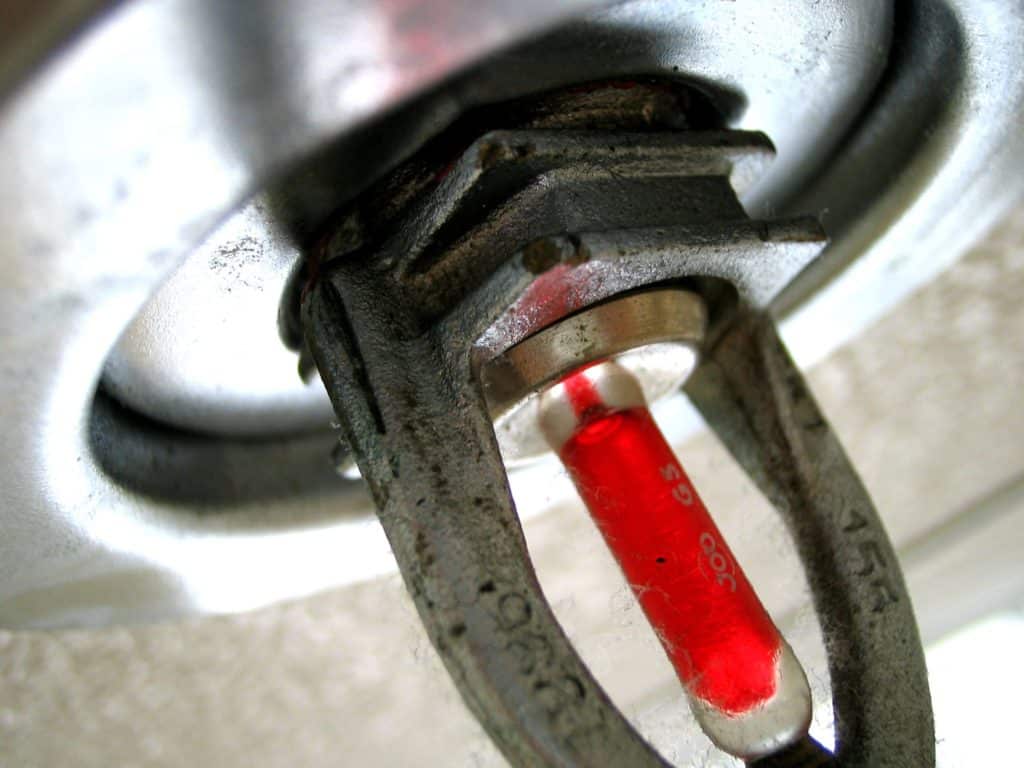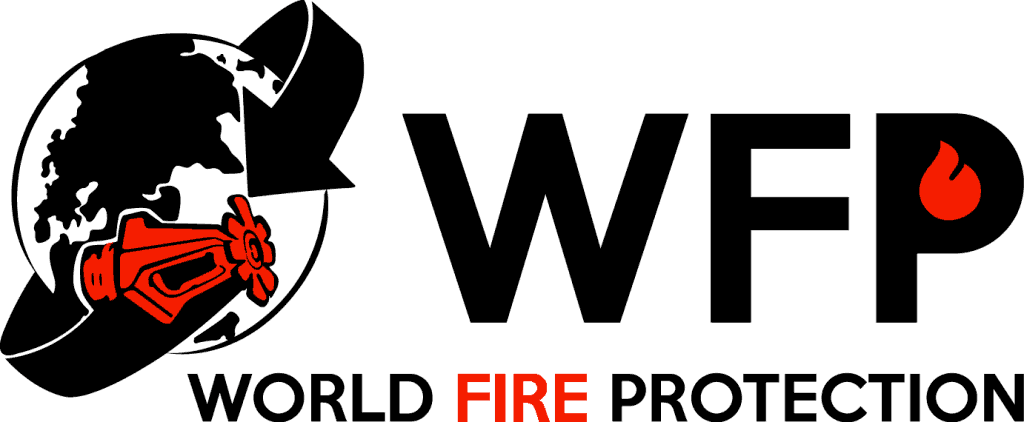
Fire sprinkler systems were invented over 120 years ago. Since then, several hundred million sprinkler heads have been installed throughout the world. In that time, they’ve effectively protected thousands of buildings, helped to prevent the financial collapse of numerous businesses, saved countless lives, prevented innumerable burn injuries, and protected the environment from catastrophic fire related pollution.
They’re universally acknowledged as the most effective first line of defense against fire.
The world’s first rules for the design and installation of automatic fire sprinklers were written in the UK by John Wormald in 1885. Fire sprinkler systems in the UK are generally designed in accordance with British Standard five three six, Part two and in some instances last Prevention Council LPC rules for automatic sprinklers.
American rules may sometimes be used in Factory Mutual or National Fire Protection Association. Sprinklers are designed to cope with a fire risk presented by each individual building and may also be specifically configured to save lives. Water still remains the most effective firefighting medium available sprinklers will deliver water right into the heart of a fire during its early stages through a specially designed sprinkler head sprinkler heads are unique. They automatically detect a fire discharge water right into the seat of the blaze and operate a local alarm. It is important to know the Dos and Don’ts of Fire Sprinkler systems.
They can also operate a remote alarm to alert the fire brigade or rather emergency center. A typical sprinkler head comprises a threaded body to connect to pipework with a valve seal to hold back the water. The valve seal is retained by a glass bulb, which contains a liquid that has a high coefficient of expansion. A small, measured quantity of vapor remains trapped when the bulb is hermetically sealed. When the liquid expands under the influence of heat from a fire, pressure in the bulb rises until the vapor is compressed.
Further increases in temperature cause a rapid build up of pressure sufficient to shatter the bulb, releasing the valve seal and allowing the water to flow onto a water distribution deflector. This results in an even distribution of water droplets in a predetermined pattern over the fire sprinkler heads are available in a variety of operating temperatures, which are identified by the color of the bulb. The pacifier has a vast array of sprinkler heads available to him. Each type of head is designed to cope with different fire risks, different operating temperatures and different operational requirements.
The British standard defines fire risks as light hazard, ordinary hazard or extra high hazard. Generally, as the hazard increases, so does the water discharge or density discharge.
Conventional sprinklers can be mounted in either the upright or pendent position, with a reflector designed to spray a proportion of the water discharged onto the surface of the ceiling. Spray sprinklers in upright or pendent positions are used for applications where all the water needs to be discharged downwards.
Sidewall sprinklers are primarily used to keep ceilings clear of pipework for aesthetic reasons or to avoid having to disturb existing ceilings when installing. Each sprinkler protects up to 17 square meters in light hazard fire risks and nine square meters in ordinary hazard fire risks sidewall sprinklers with extended coverage specifically designed to give an extended coverage of water distribution, with one sprinkler able to protect an area of up to 21 square meters. This type of sprinkler must have a quick response, Bob. In a fire, few deaths result from direct contact with flames, the greatest threat comes from inhalation of the products of combustion, such as carbon monoxide, hydrogen cyanide, hydrogen chloride or other toxic gases and the associated heat.
The reaction time of quick response sprinklers minimizes the life threatening levels of toxic gases and temperatures.
In many environments, there are people who cannot escape without assistance, such as in hospitals or homes for the elderly. Quick response sprinklers provide valuable time for those in charge to assist their escape.
A sprinkler head is connected to a water supply via a network of pipes fed throughout the building. The area protected by each sprinkler head can vary from nine square meters to 21 square meters, depending on the fire risk.
The pipework is hydraulically designed to ensure the correct flow and pressure of water is maintained at each sprinkler head. The water supply to the system can be fed from the town main for light to medium fire risks such as residential offices, hotels and light manufacturing and commercial occupancies for high fire risk areas such as heavy manufacturing and warehouse storage.
A pumped supply from a water storage tank or reservoir is normally necessary. The design requirements are specified in the British standard by five three six, Part two and LPC form, or NFPA design rules.
A control and alarm valve automatically delivers the flow of water to the sprinkler heads. There are generally five types of sprinkler system that all require a different valve arrangements. A wet system is where the pipe work is permanently charged with water and used to protect premises where temperatures are unlikely to fall below freezing point.
Where the ambient temperature may fall or be below freezing point, the presence of static water in the sprinkler pipes is clearly undesirable.
In this situation, a dry system can be installed in which the pipe work is charged with compressed air. When a sprinkler operates, the compressed air is released and the control valve opens, allowing water to flow into the pipe work and to discharge from the operated sprinkler heads.
An alternate wet and dry system, as the name implies, allows the system pipework to be alternately charged with water in summer and with air in winter when there is a risk that the ambient room temperature can fall below freezing. Proaction systems are comprised of a standard sprinkler system and an independent electrical system of heat or smoke detectors installed in the same areas as the sprinklers. On receipt of a signal from two or more detectives, the main control panel automatically opens the control valve, allowing water to flow into the sprinkler pipework.
Water is only discharged when the individual sprinkler heads reach their operating temperature. Any physical damage to a sprinkler in a non fire situation will not result in water discharge because both visual and audible alarms to be raised at the main control panel only.
A deluge system, unlike any other typical sprinkler system, is designed specifically for high hazard applications with fast fire growth potential. The deluge valve is actuated by a separate detection system responding to a fire. This brings a large number of open sprinklers into action simultaneously throughout the protected area. The successful performance of sprinkler systems has been detailed in records from across the world, paying testament to their outstanding reliability and effectiveness.
Records reveal that over a 100 year period, sprinklers successfully controlled ninety nine point five percent of fires in sprinklered premises. Statistics collated in Europe over the last decade, a remarkably similar showing that him fully sprinklered premises. 99 per cent of all fires have been controlled by the sprinkler system. The reason sprinklers are so effective is because they attacked the seat of the fire before it has time to grow and spread.
There’s no excessive use of water. In Germany, for example, 86 percent of fires in sprinkler locations have been controlled by five or fewer heads. In the UK, it’s reported that of the fires in sprinkler protected buildings over a 10 year period, almost half were controlled by one or two sprinkler heads. Only fire brigades, local government authorities and politicians alike have all seized upon these statistics. This has generated numerous campaigns for sprinklers to be installed in applications that could only ever have been dreamed about when sprinklers were first commercially launched over 120 years ago. California Residential Fire Sprinklers work similarly.
That’s because sprinklers are unique. They not only detect a fire and raise an alarm, they operate to control it and in many cases extinguish the fire.
Before the arrival of the fire brigade, only the sprinkler heads closest to the fire operate water is discharged by a sprinkler directly on to a fire at a rate of a minimum of 60 litres per minute in comparison with an unspoken goal of building where the fire brigade, using only one fire hose, could discharge 500 litres per minute. The fire will also be much larger, as it will have grown for at least 10 minutes before the fire brigade arrive. So the likelihood is that more than one hose would be used worldwide.
Research shows that of the 40 million sprinklers installed every year, only two may operate accidentally. This is because every head is individually tested before leaving the manufacturer. Sprinklers are economical to install, for example, in the case of office blocks and hotels, the sprinkler system would cost about the same to install as a quality carpet for the equivalent area. Sprinkler systems will have a lifespan of at least 25 years, probably 50 years. Some systems are still in use today that are over 120 years old.
The threat from fire will never change. It will always be with us endangering life, property and the environment we live in. Fire sprinklers will protect us and future generations.
If you need help with fire sprinkler systems in your home or property, don’t hesitate to contact World Fire Protection.
